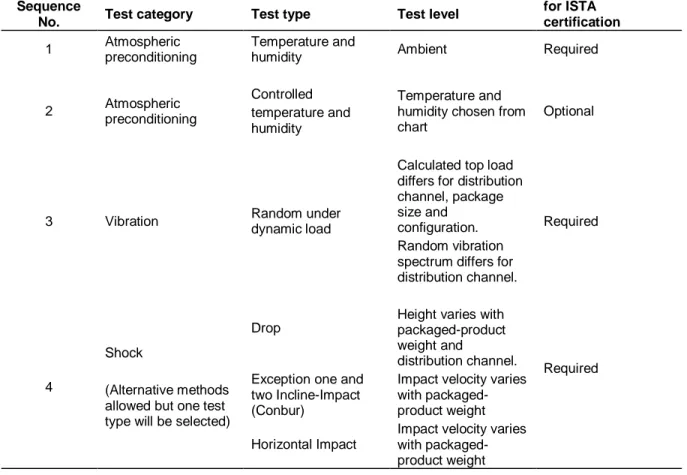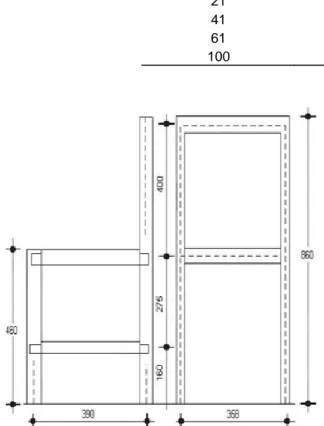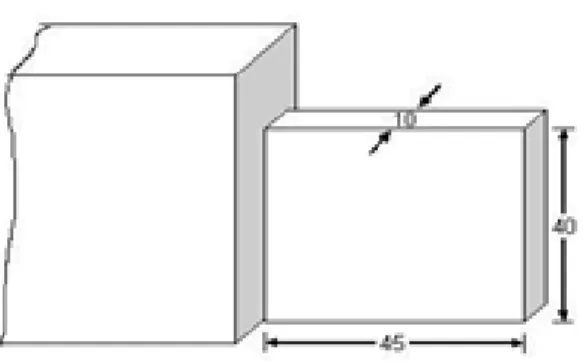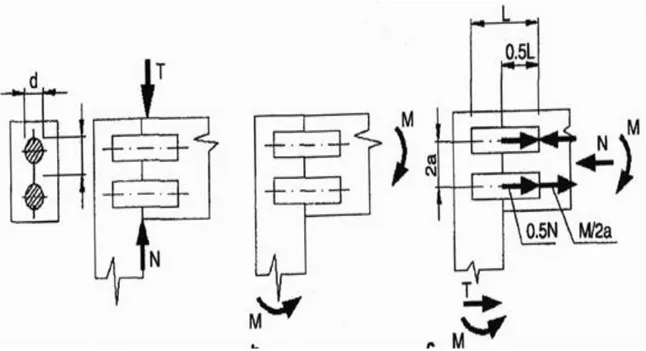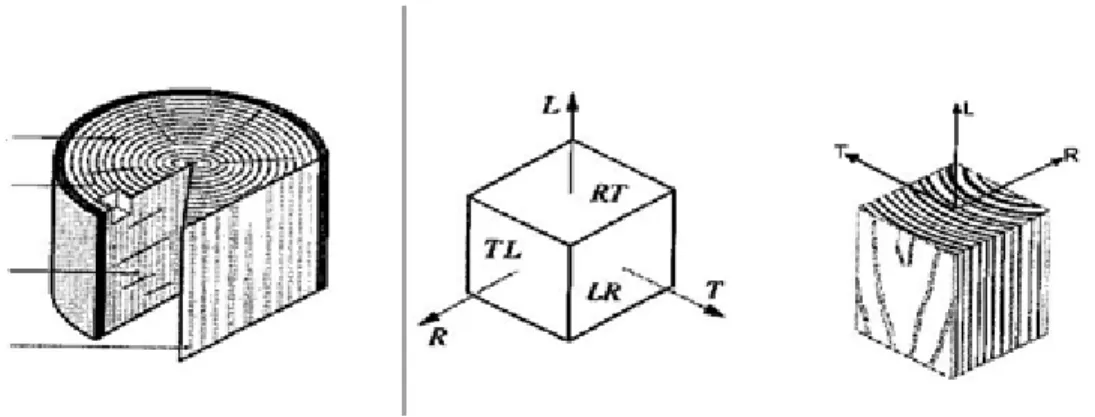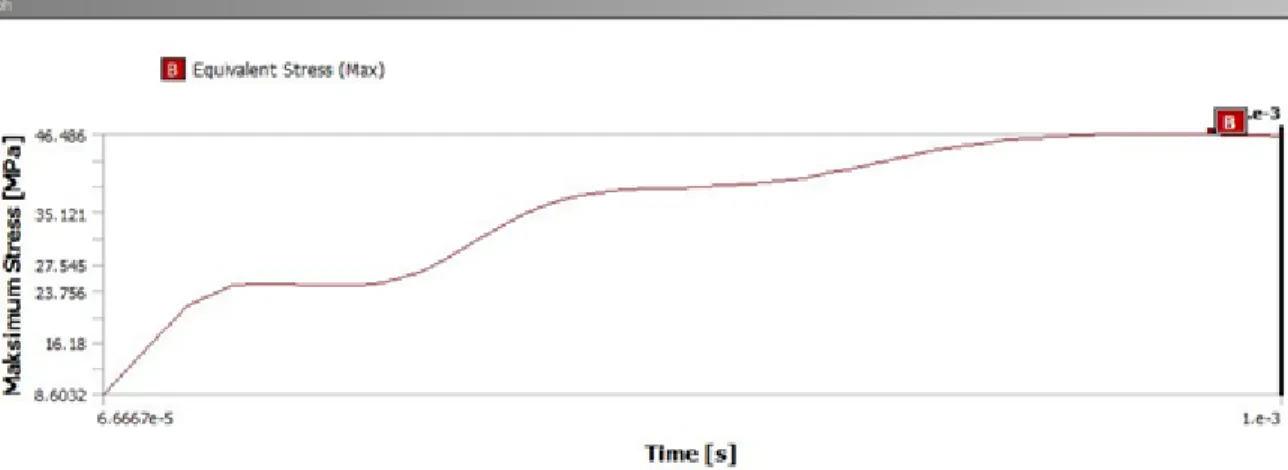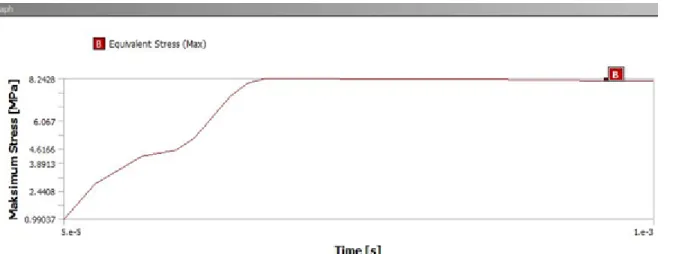ISSN 1992 - 1950 © 2012 Academic Journals
Full Length Research Paper
Finite element analysis of wooden chair strength in free
drop
Mustafa Hilmi ÇOLAKOĞLU
1* and Ahmet Celal APAY
21
TTGV Turkey Technology Development Foundation, Cyberpark Cyberplaza B Blok 6th floor Bilkent, 06800 Ankara, Turkey.
2
Sakarya University, Sakarya, Turkey.
Accepted 19 January, 2012
Wooden furniture is being widely used in all countries due to its convenience and being produced from the natural raw material. In furniture design esthetic, ergonomics and safety are the main criteria. Safety means the strength of furniture. Unfortunately, most of the time the strength of furniture is not taken into account in design as much as esthetic and ergonomics. This leads to the use of excess material meaning high cost or usage of less material causing some dangers in use. In literature, the first study of finite element method (FEM) in furniture design was in 1966. The technological developments in software and hardware promoted those studies. In those researches, the strength analysis had been done for different kinds of wood. In one of the latest studies, irregular types of sitting on the chair had been analyzed by FEM. In our study, the chair produced from southern red oak (Quercus falcata), pine red (Pinus resinosa) and Spruce Engelmann (Picea engelmannii) wood are simulated by free drop from two different heights defined in packaging standards. The strength at different parts and corners of the chair is analyzed as free dropped on its front legs by ANSYSTM. In this study, some suggestions are developed for furniture designers and manufacturers.
Key words: Free drop test, strength design of chair, finite element method.
INTRODUCTION
In the recent years, more interest has been emphasized on wood as a construction material. This is so, because the wood is a renewable and biodegradable resource and also has no waste problems. Wood can always be used as a biomass fuel which does not contribute to the greenhouse effect.
Wood can be characterized as a natural, cellular, polymer-based, hydroscopic and viscoelastic material. As a construction material, it has been used very early next to stone, owing to its good material and mechanical properties. Wood is a strong material in relation to its weight, good heat and electrical insulator and easy to machine. It can be fabricated to a variety of shapes and sizes; and not the least important-economically available.
*Corresponding author. E-mail: mhcolakoglu@hotmail.com. Tel: 00 90 31 .265 02 72. Fax: 00 90 312 265 02 62.
Its main drawbacks are: wood is an anisotropic material with an array of defects in the form of irregular grains and knots; it is subject to decay if not kept dry, and it is flammable (Mackerle, 2005).
In the last four decades, finite element method (FEM) has become the prevalent technique used for analyzing physical phenomena in the field of structural, solid and fluid mechanics as well as for the solution of field problems. Different studies on wood as a construction material (that is, material and mechanical properties, wood joining and fastening, fracture mechanics problems, drying process, thermal properties etc.) or wood products and structures (that is, lumber, glulam, panels, wood composites, ruses and frames, floors, roofs, bridges etc.) has been realized (Mackerle, 2005).
Wood is an anisotropic material but under the appropriate set of conditions, it is usually considered to be orthotropic in numerical analysis with an array of defects in the form of irregular grains and knots. When it
used as a structural material, the accurate knowledge of its mechanical properties is necessary. Wood as an orthotropic material has three planes of symmetry defined by longitudinal direction along fibers, radial direction parallel to the rays and tangential direction to the growth rings. The complex stress-strain relationships referred to three planes of symmetry characterize the mechanical properties. Their knowledge is necessary for the design of wood structures or their members. Wood is a material with a microstructure reflected on the macro scale in its grain. Cell walls are layered and contain three organic components: cellulose, hemicelluloses and natural adhesive, lignin. The lay-up of cellulose fibers in the wall is complex but important because it accounts for the part of the great anisotropy of wood. Mechanical properties of wood are complex because they exhibit variable behavior with time, temperature, moisture or loading rate. The linear relationship is observed in longitudinal and transverse tension; in compression and shear, the stress-strain relationship is nonlinear. Studies of wood from a micro to a macro level are necessary for a more precise definition and understanding of material and mechanical behavior of wood. At micro level, the fiber shape, cell wall thickness, etc. are included in modeling. Their continuum properties can be derived by use of a homogenization procedure and the FEM. The damping, shrinkage and, finally, the constitutive model is determined in various levels and then used in numerical simulations. Main topics include 2D and 3D constitutive modeling, coupled material modeling, micro- and macro-mechanical studies, linear and nonlinear mechanical properties, identification of material and mechanical parameters, influence of knots, influence of geometrical distribution of cell-walls, effect of polar anisotropy, strain localization problems, evaluation of non-homogeneities, estimation of shear modules and internal stresses of a growing tree (Mackerle, 2005).
The objective function of furniture design and construction is the minimization of wood material usage and the maximization of the strength of elements and construction nodes. Chairs and sofas are the most important furniture produced from wood. So, the strength of chairs and sofas are one of the interesting fields in furniture design. Chair and sofa design is almost always based on practical experience from traditions in handicraft manufacturing. Manufacturers generally do not use the static analysis techniques for finding the internal force inside the wooden members of a chair or sofas. However, some academic research groups have shown interest in this topic. Mackerle (2005) prepared a bibliography of the finite element analysis (FEA) containing 300 papers and proceedings done in between 1995 to 2004 on wood research. The first study on chair to mention was the work of Eckelman (1999). In his paper, Eckelman showed that a chair could be analyzed as a structure for taking up loads. He also presented some values for the maximum moments at different parts
of the chair. Eckelman continued in his studies on this field and published his book “Effective Principles of Product Engineering and Strength Design for Furniture Manufacturing” in 1991 about the strength analysis of chairs, shelves, sofas etc. He published seven papers in between 1992 to 2005. Eckelman, Suddarth and Goodrick developed a computer program in Fortran IV known in the market as Codoff and Codoc-3 in 1970’s. Eckelman continued in his studies and published papers on FEA of wood and wood composite structures, performance testing of side chairs, performance tests of school chairs constructed with round mortise and tenon joints, structural modeling of front rails for sofas (Eckelman, 1999, 2002, 2006). Kamenisky and Paulenkova (1989) from Poznan Agriculture University of Poland also studied on the utilization of finite elements in the rigidity-strength analysis of furniture structures and connections. Zienkiewicz (1972) developed the idea of FEM in Poland (Smardezewski, 1998). Kasal et al. (2006) studied the shear force and bending moment capacities of joints constructed with glued corner blocks together with Kasal and Erdil (Kasal et al., 2006). Kasal et al. (2008) worked on the estimation equations for moment resistances of L-type screw corner joints in cases of good furniture. He studied on performance test of furniture by FEA on his Ph. D. thesis (Erdil, 2002). Gustafsson from IKP Wood Technology Institute of Technology of Sweden worked on stability problems of optimized chairs, determined chair frames of ash wood, solid mechanics for ash wood, mechanical properties of some Swedish hard wood species and furniture design by use of FEA method (Gustafsson, 1995, 1996, 1997, 1997, 1999, 2001).
Gluing of wood parts is among the most effective methods for permanent joining of furniture elements in furniture production. Joints at corners of furniture are very important for the strength of furniture. Lucas et al. (2009) studied the analytical models of adhesively bonded joints of furniture by FEA. Castagnetti and Dragoni (2009) worked on efficient stress analysis of adhesives by FEA. Nicholls and Crisan (2002) studied on the stress-strain state in corner joints and box-type furniture by using FEA. Smardezewski (1998, 2002a, b) from Agriculture University of Poznan worked both on adhesive bonds in joints and numerical analysis of furniture constructions.
Carla and Carrasco from Brazil studied the loads on different parts of chairs during daily sitting activities. They measured that due to the realistic body-chair interaction, the loads on chair feet, backrest, armrest and seat rails were changing. The load was the highest on the seat rails due to the suddenly jump in the middle part of the chair without resting the arms. It was measured as 205% of the weight of the sitting body. So, for the security in design, this value must be taken into care (Paoliello et al., 2008). Kasal (2006) studied the strength of wooden sofas by FEA. Taş (2010) studied the strength properties of L-profiled furniture joints constructed with laminated
Table 1. ISTA procedure 2C tests. Sequence
No. Test category Test type Test level
for ISTA certification
1 Atmospheric
preconditioning
Temperature and
humidity Ambient Required
2 Atmospheric preconditioning Controlled temperature and humidity Temperature and humidity chosen from chart
Optional
3 Vibration Random under dynamic load
Calculated top load differs for distribution channel, package size and
configuration. Required Random vibration
spectrum differs for distribution channel.
4
Shock
(Alternative methods allowed but one test type will be selected)
Drop Height varies with packaged-product weight and
distribution channel.
Required Exception one and
two Incline-Impact (Conbur)
Impact velocity varies with packaged-product weight
Horizontal Impact
Impact velocity varies with packaged-product weight
wooden panels.
Altınok (1998) studied on determination of the dimension of frame elements on the massive wooden chair according to tension analyze in his Ph. D. thesis. Altınok and Örs (1999) studied the effect of diagonal static loads on wooden chairs. It was observed that the most critical parts of the joints in terms of stability of chair were the mortise and tenon joints.
MATERIALS AND METHODS Wooden material
The widely used southern red oak, pine red and spruce are studied as the test material. For calculations in ANSYS program, strength properties such as specific density, modulus of elasticity, Poisson’s ratio, modulus of rigidity, impact bending, compression and tension stress parallel and perpendicular to grain of southern red oak, pine red and spruce are taken from Wood Handbook of USDA Forest Product Laboratory as shown in Table 5 (Green et al., 1987).
Free drop test
There are some test standards for free drop of packaged furniture in laboratory conditions. American National Standard Institute/ Business and Institutional Furniture Manufacturer’s Association
ANSI-BIFMA X5.1 standards gives the procedures for drop test for chairs in Test 9 (ANSI/BIFMA X5.1, 1993). The International Safe Transit Association (ISTA) is the global alliance of shippers, carriers, suppliers and testing laboratories. Educational and research institutions focused on the specific concerns of transport packaging. ISTA Standards Test Procedure 2C is a partial simulation test for individually packaged furniture products (ISTA, 2011). Although, the traditional furniture definition of case goods is for hard goods and not upholstered furniture, it can be used for any furniture transported in a container.
1) It can be used to evaluate the performance of a packaged-product.
2) It can be used to compare relative performance of package and product design alternatives.
3) It should be considered for the evaluation of packaged-products intended for international distribution.
4) The package and product are considered together and not separately.
5) Some conditions of transit such as moisture, pressure or unusual handling, may not be covered.
The tests performed in sequence in ISTA Procedure 2C are shown in Table 1.
According to ISTA Procedure 2C, the alternatives shown in Table 2 are acceptable for the equipment required for the shock test. In ASTM 5276-98 (2004), the mean drop heights are given as 991, 1,083 and 1,212 mm.
In Clemson University Packaging Science Document, 2008, free drop heights for packaged products are shown in Table 3.
Table 2. ISTA type of shock tests.
Type of shock test Equipment In compliance with the apparatus section of
Drop test Free fall drop tester ASTM D 5276-98(2004)
Vertical shock test Shock test machine ASTM D 5487-98 Incline test Incline-impact tester (Conbur) ASTM D 880-92(2002) Horizontal test Horizontal impact test system ASTM D 4003-98 Rotational edge test Rotational drop ASTM D 6179-97
Table 3. Free fall drop height of packaged products. Packaged product weight (lbs.)
Free fall drop height (inch) Equal or greater than But less than
0 21 30
21 41 24
41 61 18
61 100 12
100 150 8
Figure 1. Tested chair dimensions.
protective packaging are defined. In this guide, typical packaged articles are classified according to its content. Furniture packages may be classified as “moderately rugged”. So if the package weight is less than 10 lbs, drop height for test may be 42” (1067 mm).
In free fall drop tests of chair as loaded with 42,5 and 85 kg weight, the height is 30 mm in standard TS 9215. So, by taking different standards into account, drop heights in this study, the test heights are decided as 76 and 1212 mm with no weight and as unpackaged to cover all of the mentioned standards and guides.
Properties of tested chair
The dimension of tested chair is shown in Figure 1. Front and back
legs are connected by side rails with glued tenon and mortise joints. Back, front and top rails are connected to the legs by glued two pin dowel joints as shown in Figures 1, 2, 3 and 4 (Altınok, 1998).
In Figure 5, three principal axes of wodd with respect to grain direction and growth rings was shown. As shown in Figure 1, the length of front and back leg is 860 and 460 mm, respectively. The cross sectional dimension of all parts is 50 × 24 mm. The dimension of tenon and mortise joint is 45 × 40 × 10 mm. The rails are connected to legs with two pin dowel joints. Dowel diameter is 10 mm. The length of dowel is 32 mm and its material is same with main parts. The joints are connected with glue. The other dimensions of the chair parts are shown in Table 4.
Wood may be described as a homogeneous orthotropic material; that is, it has unique and independent mechanical properties in the directions of three mutually perpendicular axes; longitudinal, radial and tangential. The longitudinal axis is parallel to the fiber (grain); the radial axis R is normal to the growth rings (perpendicular to the grain in the radial direction); and the tangential axis T is perpendicular to the grain but tangent to the growth rings. Twelve constants (nine of them are independent) are needed to describe the elastic the elastic behavior of wood; three modules of elasticity E, three modules of rigidity G, and six Poisson’s ratio. The modules of elasticity and Poisson’s ratios are related by the formula (Gren et al., 1987);
F /
A
Normal stress (1)
L /
L
Strain (2)
/
)
/
/(
)
/
(
L
L
F
A
(3) E = Modulus of Elasticity =
/
(kg/cm2) (4)
= Poisson’s ratio (5) G=Modulus of Rigidity = radial shrinkage/longitudinal elongationTable 4. The dimensions of the chair parts.
Member Length (mm) Width (mm) Thickness (mm)
Stump-front leg 460 50 24
Back post–back leg 860 50 24
Side rail 390 50 24
Back, front and top rail 334 50 24
Figure 2. Connections of chair parts.
Figure 3. Tenon and mortise joint in wooden chair.
T
R
L
j
i
j
i
E
E
İ ji j j i,
/
,/
;
;
,
,
,
(7) R RT T TR L LT T TL L LR R RL/
E
/
E
,
/
E
/
E
,
/
E
/
E
(8)The strength and damping of wood are considerably greater in the longitudinal than in the perpendicular directions. This is due to 90 to 95 of fibers being oriented longitudinally. There is also a difference in properties between the radial and tangential directions and the differences of the orientation of the micro fibrils on the various sides of the cell. Although the elastic module vary with such factors as species, growth conditions, moisture content and temperature, the module are generally in terms of the following ratio (Bodig and Jayne,1982; Holmberg et al., 1999);
1 / 14 / ; 1 / 4 , 9 / 10 / / ; 1 / 6 , 1 / 20 / / R T LR LT RT L LR L E E G G G E G E (9)
For chair material, southern red oak as hardwood and pine red and Spruce Engelmann as softwoods are chosen. Their mechanical properties are shown in Table 5 (Gren et al., 1987).
The dimension of the plate on which the chair drops is 50 × 100 cm with a weight of 14.91 kg. Its material was selected as steel. The weight of chair was 3.54 kg for oak, 2.76 kg for pine and 2.10 kg for spruce. Free fall of chair with no load on it and striking at the front two legs from the heights 76 mm (v = 1.22 m/s) and 1,212 mm (v = 4.88 m/s) was analyzed. So, for three different materials and two different heights, totally six test run was conducted.
There are different computer programs for finite element analysis that is, COSMOSTM, NASTRANTM, ADINATM, ALGORTM, ANSYSTM, RISATM etc. In our study, ANSYSTM FEA program version 14 was used for FEA of the strength of parts and joints of chair. In analysis, chair frames were treated as 3-dimensional frames. The unit system was accepted as SI- Standard International.
RESULTS
The results obtained from FEA with ANSYS software and mechanical properties of tested wood material will be compared to understand whether the dropped wooden chair will be broken or not.
Calculations were done with ANSYS program. ANSYS program accepts the drop velocity as input but not drop height. So, drop velocity was calculated from the drop height. The drop velocity for 76 mm height was 1.27 m/s and for 1,212 mm height was 4.88 m/s. The steel plate which the chair drops on was accepted as rigid. Damping coefficient of chair material was also very important for the calculations. If the damping coefficient was high, it was expected that the material absorbed the important percentage of created dynamic forces.
Drop of oak wooden chair on steel plate with a velocity of 4.88 m/s with damping coefficient of 0.05 is shown in Figure 6. The deformations and creation of maximum stress on the chair parts were shown also in Figure 6. The maximum stress was created at the striking point of the chair. The stress was also high at the connection point.
1110 Int. J. Phys. Sci.
Figure 4. Two pin dowel joints in wooden chair.
Table 5. Mechanical properties of wooden chair material.
Property Oak (southern red) Pine (red) Spruce (Engelmann)
Density (gr/cm3) 0.59 0.46 0.35
Humidity ratio (%) 12 12 12
Modulus of elasticity (ET/EL ) 0.082 0.044 0.059
Modulus of elasticity (ER/EL) 0.154 0.088 0.128
Modulus of elasticity (GLR/EL) 0.089 0.096 0.124
Modulus of elasticity (GLT/EL) 0.081 0.081 0.120
Modulus of elasticity (GRT/EL) 0.009 0.011 0.010
Poisson’s ratio (𝜇LR) * 0.350 0.347 0.422 Poisson’s ratio (𝜇LT) * 0.448 0.315 0.462 Poisson’s ratio (𝜇RT)* 0.560 0.408 0.530 Poisson’s ratio (𝜇TR) 0.292 0.308 0.255 Poisson’s ratio (𝜇RL) 0.064 0.080 0.083 Poisson’s ratio (𝜇TL) 0.033 0.050 0.058
Modulus of rupture in static bending (kPA) 75,000 76,000 64,000
Mod. of elasticity in static bending EL (MPa) * 10,300 11,200 8,900
Mod. of elasticity in static bending ET (MPa)* 845 493 525
Mod. of elasticity in static bending ER (MPa) * 1,586 985 1,140
Modulus of rigidity (GLR)* 917 1,075 1,104
Modulus of rigidity (GLT)* 834 907 1,068
Modulus of rigidity (GRT)* 89 123 89
Impact bending (mm) 660 660 460
Compression perpendicular to grain (kPa) 42,000 41,900 30,900
Compression parallel to grain (kPa) 6,000 4,100 2,800
Shear parallel to grain (kPa) 9,600 8,400 8,300
Tension parallel to grain (kPa) 3,500 3,200 2,400
Side hardness (N) 4,700 2,500 1,750
Figure 5. Three principal axes of wood with respect to grain direction and growth rings.
Figure 6. Drop of oak wooden chair on steel plate with a velocity of 4.88 m/s.
Figure 7. Time-maximum stress diagram of oak wood with a drop velocity of 4.88 m/s. with a damping coefficient 0.05.
Figure 8. Time-maximum stress diagram of oak wood with a drop velocity of 4.88 m/s, damping coefficient 0.01.
Figure 9. Time-maximum stress diagram of pine wood with a drop velocity of 1.27 m/s.
In Figure 7, time-stress diagram of oak wood chair dropped with a velocity of 4.88 m/s with damping coefficient of 0.05 was given. As shown in the diagram, maximum stress was 12.654 Mpa. Maximum stress, again for oak but for a damping coefficient of 0.01 was given in Figure 8.
For pine and spruce woods, for velocities of 1.27 and 4.88 m/s time-maximum stress daigrams are shown in Figures 9 to 12.
Maximum stress values for three different types of wood are shown in Table 6 for damping coefficient of 0.05. For oak, two different damping coefficients were studied as 0.01 and 0.05 for a height of 1,212 mm which means a drop velocity of 4.88 m/s.
DISCUSSION
In Table 6, maximum stresses occurring in parts of three
different material types of wooden chairs in free drop were given. As the drop velocity which means height of drop increased, the maximum stress occurring in furniture sections increased. For the same drop height, maximum stress was minimum for pine and maximum for spruce. For oak, the maximum stress was studied for the damping coefficients of 0.01 and 0.05 for a drop velocity of 4.88 m/s. The maximum stress for 0.01 was four times higher than 0.05. The chair front legs were not broken when dropped with a velocity of 1.27 m/s, but were broken with a velocity of 4.88 m/s. It was clear that FEA technique can be used to test other types of furniture in free drop. The development of furniture design according to results of FEA method is expected to increase the quality and safety and decrease the cost of final product. At the end of this research, it was understood that FEA technique can be successfully used to analyze the mechanical strength of wooden chairs in free drop from different heights. The height of drop may be increased to
Figure 10. Time-maximum stress diagram of pine wood with a drop velocity of 4.88 m/s.
Figure 11. Time-maximum stress diagram of sprece wood with a drop velocity of 1.27 m/s.
Table 6. The strength values as the front two legs were striking only.
Wood type Drop velocity (m/s) Damping coefficient Maximum stress (Mpa)
Oak 1.27 0.05 4.0336 Oak 4.88 0.05 12.6530 Oak 4.88 0.01 46.4860 Pine 1.27 0.05 3.5165 Pine 4.88 0.05 10.6630 Spruce 1.27 0.05 2.8157 Spruce 4.88 0.05 8.2299
see the impact on strength. Also, standard weights may be loaded to the chair to simulate the daily use. A similar study can be done for all other furniture types. Drop performance test of furniture as packaged or not is a time consuming and costly procedure. So, FEA technique is a cheap and rapid method for analyzing the strength of furniture. By using FEA computer software such as ANSYS, the drop of furniture may be simulated for performance test of packaged or unpackaged furniture to develop the design of furniture and its packaging. In this way, the safety was expected to rise. Use of less material in production and packaging was expected in the production and transport costs also.
REFERENCES
Altınok M (1998). Determination the dimension of frame elements on the massive wooden chair according to tension analyzes. Ph. D. Thesis. Gazi University, Ankara.
Altınok M, Örs Y (1999). Modeling of cross-section and frame optimization for chair design. Turkish. J. Agr. Forestry, 23(2): 473-479.
ANSI-BIFMA X5.1 (1993). American standard for office furnishings- general purpose office chairs tests, test 9: Drop test for chairs American National Standards Institute. Business and Institutional Furniture Manufacturer’s Association.
ANSYSTM FEA Software version 14.
ASTM 5276-98 (2004). Standard test method for drop test of loaded containers by free fall.
Bodig J, Jayne BA (1982). Mechanics of wood and wood composites. Van Nostrand, New York.
Castagnetti D, Dragoni E (2009). Standard finite element techniques for efficient stress analysis of adhesives. Int. J. Adhesion Adhesives, 29(3): 125-135.
Eckelman CA (2002). A technique for structural modeling of front rails for sofas. Euro. J. Wood and Wood Prod., 60: 60-65.
Eckelman CA (2006). Performance test of school chairs constructed with round mortise and tenon joints. Forest Prod. J., 56(3): 51-57. Eckelman CA (1999). Performance testing of side chairs. Euro. J.
Wood Wood Prod., 57: 227-234.
Erdil YZ (2002). Integrated product engineering and performance testing of furniture. Ph. D. Thesis. Purdue University, West Lafayette, Indiana, USA.
Gren DW, Winandy JE, Kretschmann DE (1987). Wood handbook. USDA Forest Product Laboratory, Madison, WI, USA.
Gustafsson SI (1995). Furniture design by use of finite element method. European J. Wood and Wood Prod. M., 53: 257-260.
Gustafsson SI (2001). Mechanical properties of some Swedish hard wood species, Proc. Inst. Mech. Eng., 215: 125-131.
Gustafsson SI (1997). Optimizing ash wood chairs. Wood Sci. Technol., 31: 291- 301.
Gustafsson SI (1999). Solid mechanics for ash wood. Euro. J. Wood and Wood Prod., 57: 373-377.
Gustafsson SI (1996). Stability problems of optimized chairs. Wood Sci. Technol., 30:39-342.
Gustafsson SI (1997). Undetermined chair frames of ash wood. Euro. J. Wood Wood Prod., 55: 255-259.
Holmberg S, Persson K, Petersson H (1999). Non-linear mechanical behavior and analysis of wood and fiber materials. Comput. Struct., 72: 459-480.
International Safe Transit Association (ISTA) (2011). http://www.ista.org.
Kasal A (2006). Determination of the strength of various sofa frames with finite element analysis. Gazi Univ. J. Sci., 19(4): 191-203. Kasal A, Erdil YZ, Eckelman CA (2006). The shear force and bending
moment capacities of joints constructed with glued corner blocks. Forest Prod. J., 56 (9): 74-79.
Kasal A, Erdil YZ , Zhang J, Efe H, Avcı E (2008). Estimation equations for moment resistances of L-type screw corner joints in case goods furniture. Forest Prod. J., 58 (9): 21-27.
Lucas FMS, Paulo PJC Neves, Adams RD, Wang A, Spelt JK (2009). Analytical models of adhesively bonded joints. Int. J. Adhesion Adhesives, 29(3): 331-341.
Mackerle J (2005). Finite element analyses in wood research: A bibliography. Wood Sci. Technol., 39: 579–600.
Nicholls T, Crisan R (2002). Study of the stress-strain state in corner joints and box-type furniture using FEA. Euro. J. Wood Wood Prod., 60: 66-71.
Package Design Guide (2008). http://www.gualityfoam.com/package-design-guide.asp 10.12.2008.
Paoliello C, Vladimiro E, Carrasco M (2008). Chair load analysis during daily sitting activities. Forest Prod. J., 58(9): 28-31.
Packaging Science Document (2008). Clemson University.
Smardezewski J (1998). Numerical analysis of furniture constructions. Wood Sci. Technol., 32: 273-286.
Smardezewski J (2002). Strength of profile-adhesive joints. Wood Sci. Technol., 36: 173-183.
Smardezewski J (2002). Technological heterogeneity of adhesive bonds in wood joints. Wood Sci. Technol., 36: 213-227.
Taş HH (2010). Strength properties of L-profiled furniture joints constructed with laminated wooden panels. Sci. Res. Essays, 5(6): 545-550.
